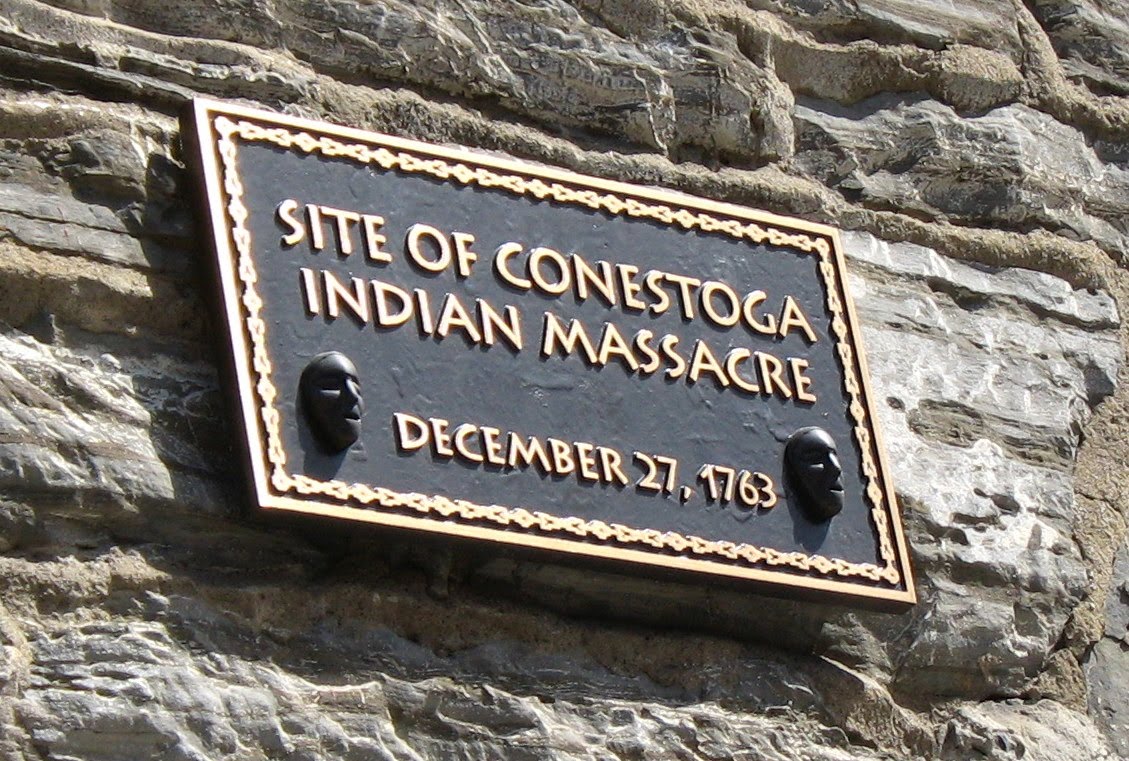 Fulton Opera House, Site of Conestoga Indian Massacre
Fulton Opera House, Site of Conestoga Indian Massacre
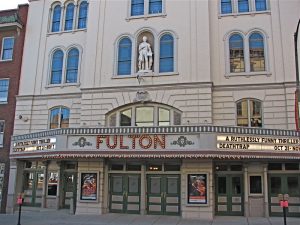 By the Rev. Suzanne Wenonah Duchesne
By the Rev. Suzanne Wenonah Duchesne
On a sunny day during our Eastern PA Annual Conference in June, several of us entered the historic Fulton Theatre in downtown Lancaster, just a short walk from the Convention Center. I wondered what we would see and feel there, if anything.
After our conference’s opening worship service that featured a ceremonial Act of Repentance towards Native Americans, I felt it was important to make a pilgrimage to this site of the Conestoga Indian Massacre and honor the people who perished here in that tragedy.
In 1763 an armed mob known as the Paxton Boys brutally killed unarmed Indian men, women, and children in the streets of Lancaster and in the local jail where the theater now stood. (Rick Kearns: “Ethnic Cleansing in Pennsylvania: The 1763 Massacre of the Conestoga.” Indian Country Today Media Network, January 3, 2014.)
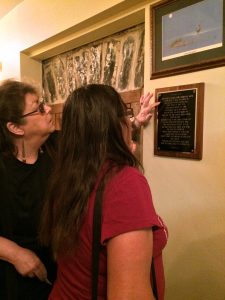 I went with Sandi Cianciulli, an Oglala Lakota member of our conference, and Boe Harris, a Turtle Mountain Chippewa and Spirit Lake Dakota visiting from the Peninsula-Delaware Conference. We and some others from Eastern PA joined some theatre buffs for a guided tour of the Fulton.
I went with Sandi Cianciulli, an Oglala Lakota member of our conference, and Boe Harris, a Turtle Mountain Chippewa and Spirit Lake Dakota visiting from the Peninsula-Delaware Conference. We and some others from Eastern PA joined some theatre buffs for a guided tour of the Fulton.
Entering the chilly lobby I was curious about how the history would be presented. I was about to walk on ground where a whole people had been wiped out. (Learn more at: http://www.thefulton.org/about/history/building-history/ .) While we were unable to view the wall of the original courtyard, which is evident in the basement of the theater, we were invited to view the remaining door and the memorial to victims of the massacre, which is accessible to anyone entering the theater.
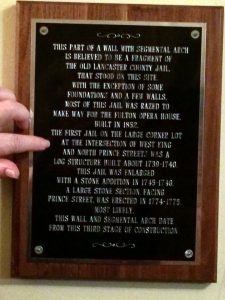 The docent asked our knowledgeable Native American members if they would speak to the tour group about their understanding of the history. Sandi and Boe shared the story as well as the healing that takes place when Native American visitors are permitted to visit such sites.
The docent asked our knowledgeable Native American members if they would speak to the tour group about their understanding of the history. Sandi and Boe shared the story as well as the healing that takes place when Native American visitors are permitted to visit such sites.
As a non-Native I was struck by the importance, for myself and others on the tour, of recognizing the full history of the building, including this sordid chapter, as well as the systems and ideologies that allowed these kinds of tragedies to occur. However, Boe and Sandi quickly pointed out that non-Native persons were also massacred and hurt at Conestoga, and we need to remember their sacrifices to protect their Native American sisters and brothers and their children.
As we United Methodists walk into the Act of Repentance, this is a model for us all. We truly do need each other to stop the violence of racism and the tragic erasure of a people–their history, culture, identity and very presence.
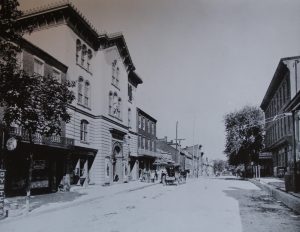 But we also need all of us–in our ALLNESS! All of our spiritual gifts. All of our experiences. All the facets of our identities. All of our God given passion to love each other, to serve God, and to follow the leading of the Holy Spirit as disciples seeking the transformation of the world.
But we also need all of us–in our ALLNESS! All of our spiritual gifts. All of our experiences. All the facets of our identities. All of our God given passion to love each other, to serve God, and to follow the leading of the Holy Spirit as disciples seeking the transformation of the world.
The Rev. Suzanne Wenonah Duchesne, an elder and a doctoral student in religion at Drew University, is a member of the Eastern PA Conference Committee on Native American Ministry.
